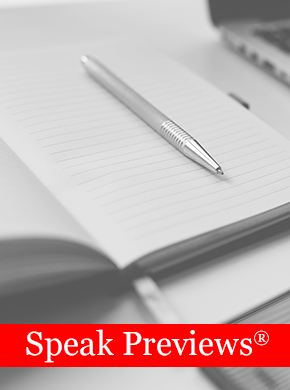"I can't read this," a client exclaimed, tossing a document he needed to review down on a table. It hit pretty hard, its two hundred pages secured in a binder. "I can't find the point of the paragraphs, much less the major sections. It has subheads that go to five and six levels—like 8.2.2.1.1.1. And the sentences? Some of them go to half a page. I can't make sense of this at all!"
What the client described was certainly not an effortless read. But did it need to be so arduous? Not at all, says ECG CEO Frank Carillo. "We aren't talking about 'dumbing down' a document," Frank explains. "We're talking about using organizational, formatting, and writing techniques that are reader-friendly, that take into account the energy and attention required to read a complex document, especially a long one."
In other words, the writer should take all action necessary to make reading a document as easy as possible. While almost all reading requires effort, the writer who wants to be read and understood takes several measures to ensure that readers' effort is well-spent.
Begin sections as well as paragraphs with the message you want readers to know. Doing so may not seem natural to you at first—many of us have become accustomed to presenting evidence or support before following that evidence or support with a conclusion. But frontloading your message helps readers understand your trajectory.
If you are providing more than one element of support, frontloading also helps the reader sort through the evidence you provide based on the framework you invoked at the beginning. Frontloading lets them know your position at once and thus provides them a framework for the examples, data, and analogies with which you will support that message. Whittle each of those messages into a point.
That pointed message can also be considered an umbrella statement, a sentence that presents a conclusion, interpretation, hypothesis, claim, or thesis. Alternatively, it can present essential context or definitions. In all cases, it's followed by support that establishes its legitimacy.
Headings and subheadings help a reader navigate the structure of a document and understand what content each part contains. They also provide additional white space that not only adds to the visual
attractiveness of a document but gives its readers some breathing and thinking room.
But don't overuse subheadings. Taking a subheading down to an 8.2.2.1.1.1. level is probably taking it too far. Each numbered subheading and its accompanying title interrupt the reading of the text. So be appropriately frugal. Once you've divided a section into 8.2.2, for instance, construct an umbrella statement for that last level that encompasses content you might otherwise be tempted to include in additional subheadings. It can almost always be done.
ALIGN SENTENCE TYPE AND LENGTH WITH MESSAGE AND PURPOSE
Do vary the type of sentence you use in documents—keep some short and simple for emphasis, to highlight a message or particularly persuasive piece of evidence, for example. Others may be longer and more intricate to express how certain ideas or examples relate to each other. But beware the overuse of parentheses that disrupt message flow and comprehension.
In general, written sentences can be longer than those used in presentations; readers can re-read as necessary. Writers should take care to compose sentences in a range of lengths as well as types to keep the reader engaged and to best communicate the intended meaning.
SELECT TRANSITIONS THAT AID COMPREHENSION
Transition, signal, bridging, or clue words—all refer to the types of words that help a reader construct meaning. They indicate relationship and direction. Thus they serve as a shortcut to understanding that a comparison, a cause, an effect, a history, or a host of other structures is underway. They help readers follow logic and organization.
As a writer, put forth your greatest and best effort. Readers can then use more of their own to engage with your messages instead of trying to figure out what they are.



